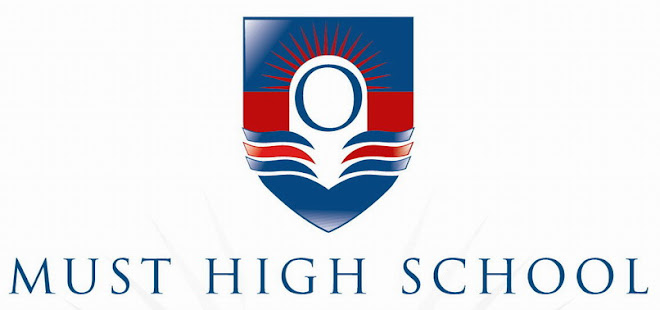The Chemistry Course in Diploma Program at MUST is delivering up-to-date, first-rate, and industry-specific and education to its students.
MUST Online High School has divided this course into 5 sections. They are Introduction to Chemistry, Matter and Change, Scientific Measurement, Atomic Structure, Electrons in Atoms, The Periodic Table, Ionic and Metallic Bonding, Covalent Bonding, Chemical Names and Formulas, Chemical Quantities, Chemical Reactions, Stoichiometry, States of Matter, The Behavior of Gases, Water and Aqueous Systems, Solutions, Thermo-chemistry, Reaction Rates and Equilibrium, Acids, Bases, and Salts, Oxidation-Reduction Reactions, Electro-chemistry, Hydrocarbon Compounds, Functional Groups, The Chemistry of Life & Nuclear Chemistry.
Introduction to Chemistry: This introductory part of the high school diploma course explores the interaction of the chemical substances, practice of several millennia in various parts of the world and the structure of the objects.
Matter and Change: This section of the course explains the chemical matter as the part of the universe that is made of chemical atoms and antimatter.
Scientific Measurement: This topic defines the standards of measurement, the units and systems, the imperial system, the metric system, prefix conversion, stance, time, mass and economics.
Atomic Structure: This topic will teach you that the atomic theory is a theory of the nature of matter, which states that matter is composed of discrete units called atoms.
Electrons in Atoms: This topic will teach you to classify the different categories of electrons, the properties and the behavior of the electrons and the visualization in the electrons.
The Periodic: This part of the course will teach you the methods of displaying the periodic table, alternative versions of the periodic table and the arrangement of periodic table.
Ionic and Metallic: This section deals with bonding. It will introduce you to the strength of the bond, the conductive properties, the solubility and compound formation and the optical properties.
Covalent Bonding: This part of the course will teach you that a covalent bond is a form of chemical bonding that is characterized by the sharing of pairs of electrons between atoms.
Chemical Names and Formulas: This section of the course explains that the structural formula of a chemical compound is a graphical representation of the molecular structure.
Chemical Quantities: This section describes the phenomenon of Balancing chemical equations, the linear system balancing and the chemical equations.
Chemical Reactions: This part defines the Reaction types and the Chemical kinetics.
Stoichiometry: This section explains that Stoichiometry is the calculation of quantitative relationships of the reactants and products in chemical reactions.
States of Matter: This part of the course defines the solids as a solid object in the states of matter, the liquids as one of the principal states of matter and the gas as a state of matter.
The Behavior of Gases: This part explains the phenomenon that in physics, a gas is a state of matter without a definite shape or volume that is in more or less random motion.
Water and Aqueous Systems: This section deals with the ideology that aqueous biphasic systems (ABS) or aqueous two phase systems are clean alternatives for traditional organic-water solvent extraction systems.
Solutions: This section will teach you that in chemistry, a solution is a homogeneous mixture composed of two or more substances.
Thermo-chemistry: This section explains the phenomenon of thermodynamics and physical chemistry, thermo-chemistry is the study of the heat evolved or absorbed in chemical reactions. Reaction Rates and Equilibrium: This section describes Redox and all the chemical reactions in which atoms have their oxidation number (oxidation state) changed.
Acids, Bases, and Salts: This section defines salt, physical and chemical properties of acids, bases and strong bases.
Oxidation-Reduction Reactions: This section will teach you that in organic chemistry, a hydrocarbon is an organic compound consisting entirely of hydrogen and carbon.
Electro-chemistry: This section describes that Electrochemistry is a branch of chemistry that studies chemical reactions which take place in a solution at the interface of an electron conductor and an ionic conductor.
Hydrocarbon Compounds: This section deals with organic chemistry, it explains that a hydrocarbon is an organic compound consisting entirely of hydrogen and carbon. hydrocarbons.
Functional Groups: This section deals with organic chemistry, it explains that functional groups are specific groups of atoms within molecules that are responsible for the characteristic chemical reactions of those molecules.
The Chemistry of Life: This section of the course will teach you that carbon forms the backbone of biology for all life on Earth.
Nuclear Chemistry: This section explains that nuclear chemistry is a subfield of chemistry dealing with radioactivity, nuclear processes and nuclear properties.
Must’s High School Diploma Programs are beyond borders and MUST course of Chemistry covers all areas of English applicable worldwide.
This major at MUST High School will give students huge prospects of success in their professional and personal lives.
http://ping.fm/xTD5e
Subscribe to:
Post Comments (Atom)

No comments:
Post a Comment